Zev on the need for greater food stamp outreach 9/29/10
September 30, 2010
Don’t run, walk—for a good cause
September 30, 2010
It’s less strenuous and easier on your knees than running, and walking can also help raise money for a couple of worthy causes in the next couple of weeks.
On Saturday, October 2, the National Alliance for Mental Illness will hold its Seventh Annual 5K (three-mile) NAMIWalks for the Mind of America event starting at the Santa Monica Third Street Promenade.
Check-in begins at 8 a.m. and, following opening ceremonies, the walk starts at 10:00 a.m. Several thousand are expected to take part in this fitness fundraiser to fight the stigma of mental illness, raise public awareness of the issue and support NAMI Signature Programs that are offered free to those in need.
Visit NAMI Los Angeles County Walk for all the particulars. And if you’re joining the effort a little late, not to worry—donations may be submitted online or mailed over the next two months.
Next, lace up your walking shoes for AIDS Walk LA on Sunday, October 17. This is the nation’s first and most successful charity walk to raise funds for public education and direct services to people with HIV/AIDS. From its modest beginnings in 1985, with some 4,500 participants raising $673,000, AIDS Walk LA has grown into an event that attracts nearly 25,000 walkers who raise several million dollars a year for HIV/AIDS-related services throughout the region.
This 10K (six-mile) walk begins and ends at West Hollywood Park, just across San Vicente Boulevard from the Pacific Design Center. Check-in opens at 8:30 a.m., the preliminaries and warm-up continue at 9:15 a.m., and walkers head out at 10:00 a.m. for their two-to-three-hour jaunt.
It’s fun, the free sponsored refreshments are great, and the cause is righteous. Visit the AIDS Walk LA home page for full details, and sign up online.
Posted 9/30/10
New law boosts child welfare database
September 30, 2010
 Los Angeles County’s child welfare officials won a key victory in Sacramento this week when Governor Arnold Schwarzenegger signed into law a bill expanding an important computer database used in child abuse investigations.
Los Angeles County’s child welfare officials won a key victory in Sacramento this week when Governor Arnold Schwarzenegger signed into law a bill expanding an important computer database used in child abuse investigations.
Assembly Bill 2322 improves the information available to county social workers in a computer database called the Family and Children’s Index (FCI), which provides child welfare workers with key medical, law enforcement and social services data as they launch investigations.
The bill, sponsored by Assemblyman Mike Feuer and speaker emeritus Karen Bass, allows L.A. County to include in the FCI database convictions for crimes against children by family members and others living with a child who have come to the attention of child welfare authorities.
Under the old system, social workers had to wait days or weeks to obtain information about convictions of family members and could learn nothing about convictions of non-family members.
The bill was sponsored by the county, and officials from the County Counsel and the Chief Executive Office were instrumental in crafting provisions to improve FCI.
The latest expansion follows news last week that the LAPD will become the first non-county agency to contribute data to FCI.
The new law takes effect immediately.
Post 9-30-10
Hunger fight goes on the road
September 30, 2010
Hunger, like homelessness, remains a national shame and an incredible stain on the richest society on earth. It seems inconceivable, but it is an indisputable fact that a rising number of our fellow citizens are going to bed hungry every night.
Food stamps are an important weapon in this battle, but we estimate that only about 50% of the people in Los Angeles County who are eligible are actually receiving this crucial assistance.
That’s why I was so encouraged to see the county rev up a new tool in the fight against hunger the other day. The Department of Public Social Services’ new mobile “Health and Nutrition Mobile Unit” is going to be hitting the streets, moving into our communities to find people who are eligible for food stamps and signing them up.
This 34-foot custom-made traveling office, fully equipped with computers, will be a rolling alternative to the status quo, in which food stamp applicants usually go to a county DPSS office, which unfortunately, for some, still carries a stigma. With this van, we can bring the mountain to Mohammed, so to speak.
But any successful innovation is about more than just equipment. This effort also will be tapping into the incredibly valuable human resources of our non-profit organizations—like the St. Joseph Center in Venice, where the van was unveiled, and the L.A. Jewish Federation, which since last fall has been running a “Fed Up With Hunger” campaign.
The nonprofits’ staff workers and volunteers will be on the front lines of this new outreach effort, identifying candidates for food stamps and assisting them with the time-consuming paperwork that is required on the front end. That way, when county workers show up in the van, they will be able to handle their end of the process more quickly and efficiently.
And reaching as many people as possible is the name of the game in these tough times.
Over the past year, we have seen demand at food pantries go up from 50% to 125%.
Yet many who should be receiving food stamps haven’t applied for them. Helping these individuals and families put nutritious food on the table will set up a win-win situation for all involved.
For one thing, these new clients (who, by the way, will be using electronic cards for their purchases, not stamps or vouchers) will be bringing business to our local supermarkets and grocery stores.
For another, they’ll be able to access an array of other services at the same time they sign up for food stamps—including mental health, housing and health care assistance.
We’ll essentially become a one-stop operation to help make life better for many of the folks who need a hand these days. And we’ll be doing it out in the neighborhoods where the need is greatest. So, as the old saying goes, let’s get this show on the road.
To hear Zev discuss the need to increase access to food stamps, watch the DPSS video below.

Posted 9/30/10
Community wins 405 bridge change
September 29, 2010
Neighborhood traffic concerns—and the potential for saving millions in construction costs—have prompted a radical rethinking of plans to bring down the Mulholland Bridge over the 405 Freeway.
Instead of demolishing and rebuilding the 1959 structure—one of three bridges targeted in the 405 Sepulveda Pass project—workers instead would construct an entirely new Mulholland overpass just south of the current bridge. Coming from the west, drivers would enter the new bridge in the same place they do now, then angle slightly south across the freeway before ending up on Skirball Center Drive. Only after the new span was completed would the old one come down, thus reducing traffic-related inconvenience during construction.
Adopting the new approach is “about 99% sure,” said Mike Barbour, who is heading up the project for the Metropolitan Transportation Authority. He estimates the new method would save between $4 million and $10 million, most of that due to a more straightforward, single-phase building process and a more streamlined approach to temporarily relocating utilities.
The impetus to take another look at the construction plan grew out of meetings this summer with community activists concerned about how dismantling and rebuilding the Mulholland Bridge would affect traffic in the area, home to many educational and religious institutions.
There was applause when the new approach was announced at a recent meeting of the project’s Community Advisory Committee. The group was convened to provide input on the $1.034 billion project, a partnership between Metro and Caltrans that will create a 10-mile northbound carpool lane on the 405, along with other improvements.
“This group of decision-makers is actually listening to the public,” said Richard H. Close, president of the Sherman Oaks Homeowners Association and a member of the advisory committee, who was not at the recent meeting but took part in an earlier session where community concerns about the Mulholland Bridge were discussed. “They’re willing to redesign and solve a problem. It’s a much more collaborative process with the MTA than with other agencies.”
“On other projects, we’ve been told, ‘we are the experts.’” That may be true from an engineering standpoint, he said, but people who live in the area have an invaluable perspective, too: “We know traffic flow.”
He said Metro’s decision to take another look “is somewhat historic, especially on a transportation project.”
Still, other community concerns linger, many relating to the bridge at Skirball Center Drive, where demolition work on the northern side of the structure is slated to begin on October 12. Project plans currently call for freeway on- and off-ramps to be redirected onto Sepulveda Boulevard, rather than directly onto the bridge, as they are now. Residents say they fear the change will create traffic problems on Sepulveda.
“There are a lot of issues with the Skirball Bridge,” said Laurie Kelson, an advisory committee member and chair of the Encino Neighborhood Council’s traffic and transportation committee. “Our community does not want the ramps moved.”
Barbour said those concerns are being reviewed and alternatives are being evaluated. But he said he doesn’t see “a win/win at this point” regarding the Skirball ramps, given what the community wants and what traffic engineers say is needed for improved traffic flow.
Some also have posed questions in recent days about what a new Mulholland Bridge would look like, said Ron Macias, a Metro community relations officer. A 2007 Caltrans assessment described the current structure as an historic example of transportation engineering that “exemplifies the minimalist or modernist aesthetics of the period.”
And there are those, like Louis Krokover, president of the Encino Neighborhood Council and a 3rd generation builder, who argue that the Skirball and Mulholland bridges don’t need to be replaced at all.
Officials on the project say that building a wider freeway requires rebuilding and modernizing the three bridges, which, in addition to Skirball and Mulholland, include the bridge at Sunset Boulevard, whose southern side has been demolished and is now being rebuilt.
Barbour said he hopes that construction on the new Mulholland Bridge will start in January, 2011, and take about 12 months to complete.
He’s currently in the process of negotiating the new plan with the project’s contractors and working out details with the Los Angeles Department of Transportation.
And he credits the community groups—which he acknowledged frequently get “blown off” in dealing with public agencies—with sending his staff back to the drawing board. That review helped determine that the project had the right of way to land on which to build the new Mulholland Bridge, which made rethinking the process possible.
“They pushed us,” Barbour said. “They asked us and we went back and looked at it.”
Posted 9/29/10
Cash infusion will let TB ward open
September 29, 2010
Supervisors on Tuesday approved $1.1 million to staff a new ward for patients with tuberculosis and other infectious diseases at Olive View-UCLA Medical Center, clearing the way for the facility to begin operating next year.
The supervisors’ decision to fund the unit came as a result of a motion by Supervisors Michael D. Antonovich and Zev Yaroslavsky. The money will be enough to staff the unit, set to open in March or April, for just half a year. Going forward, it will cost $2.2 million annually to staff the facility—less than was originally envisioned because of lower operating costs and more potential revenue from moving patients into the facility from other parts of the system. Even the reduced costs, down from $4.6 million originally estimated, will add to the department’s deficit but also will provide needed health care beds for infectious disease patients elsewhere in the overcrowded system.
“It does not make sense for this brand new building to sit empty [when] for a relatively small cost, it could be part of the solution to overcrowding in the hospitals and provide more appropriate care to these long-term patients,” the supervisors’ motion said.
Tuberculosis has been declining for years in Los Angeles County, but public health officials say it is important to remain vigilant. The new ward is seen as an important resource for treating some patients who require long-term hospitalization, including the homeless and those who live with small children and people with compromised immunized systems. The county lost its only dedicated tuberculosis ward when High Desert Hospital in Lancaster closed to inpatients in 2003.
The new Olive View facility also could be used to treat victims of a bioterrorism attack, and, on a more routine basis, for patients with infectious diseases other than tuberculosis. Such patients now often are confined to isolation rooms within intensive care units but could be relocated once the Olive View facility is up and running.
Carol Meyer, chief of operations for the Department of Health Services, said the decision to fund staffing for the new facility was a mixed bag: an added ongoing expense for an already financially-troubled system but, “from a patient perspective, it’s a positive.”
Posted 9/29/10
A sneak peek at great art
September 28, 2010
LACMA’s new Lynda and Stewart Resnick Exhibition Pavilion opens to the public this week. The three inaugural exhibits range from ancient to modern, colossal stone carvings to intricate beaded dresses. Images from a recent press preview for the 45,000 square foot gallery space, designed by Renzo Piano, capture the wide range of art under one expansively sky-lit roof.
Tickets for this weekend’s community weekend are free, but they are going fast. Check out LACMA’s website on Thursday to secure last minute tickets—or become a museum member and go anytime.
Posted 9-28-10
Book ‘em (online) Danno
September 28, 2010
Want to reserve a kayak at Castaic Lake or an RV hookup at Dockweiler Beach?
Starting this week, you can—with a click of the mouse.
A new online reservation system for selected county parks just went live, allowing residents to book—and make credit card payments for—a wide range of activities at selected parks and recreation areas, including picnic areas, swim lessons, and campsites and RV spots.
The reservations site starts with five facilities: Dockweiler Beach, Castaic Lake State Recreation Area, Arcadia County Park, Alondra Park in Lawndale and Charles S. Farnsworth Park in Altadena.
New facilities will be added over the next six months.
Using the new system, the public can track availability, book a reservation and pay by credit card. Booking availabilities at the various parks include basketball courts, picnic areas, meeting rooms, and even a space at Arcadia Park specifically suited for a dog show.
The new program has a simple-to-navigate site along with a lengthy name, the Los Angeles County Activity Registration and Reservation System, or LACARRS. It was developed jointly by the county Parks and Recreation, Beaches & Harbors and Internal Services Departments and the Chief Information Office.
Posted 9/28/10
Feds give boost to first responders
September 27, 2010
There’s nothing like a cool $154.6 million to get Los Angeles all fired up.
Especially when the money–the largest federal grant of its kind–will be used to help establish a new emergency-communications network linking all of the L.A. region’s police, fire and emergency workers.
The award was announced Monday by a jubilant group of elected officials whose enthusiasm survived the broiling 100+ degree heat outside the county Hall of Administration.
“Today’s news is huge – a big down payment on a safer future,” said Rep. Jane Harman, of Venice, who helped secure the funding as a senior member of the House Committee on Homeland Security. “Our ability to prevent, protect and respond to natural and man-made disasters will be dramatically enhanced.”
The grant will help pay to design and build the new communications network, called the Los Angeles Regional Interoperable Communications System (LA-RICS for short). The wireless network aims to become a seamless disaster-communications system linking all of the region’s 34,000 first responders and disaster personnel, from police and fire to health-care workers. It will also enhance communication with state and federal agencies.
Failures to communicate among multiple agencies have plagued responses to emergencies ranging from 9/11 to Hurricane Katrina to Southern California’s large-scale natural disasters.
“It is critical that all of the agencies that respond to disasters, whether they are fires or floods, are able to communicate with each other,” said Supervisor Zev Yaroslavsky.
He and other officials praised Harman for understanding the network’s importance, and, as he said, “for doing something about it.”
“I want to thank you for your yeoman’s effort,” Los Angeles Mayor Antonio Villaraigosa said to Harman.
The new system will be built over the next 3 to 5 years at an estimated cost of $500-$700 million.
LA-RICS was created in 2009 as a Joint Powers Authority by the county and city of Los Angeles and 81 other local cities. The new voice and data radio system, to be linked with fiber-optic cable, microwave antennae and other connections, would replace the current patchwork that often blocks communication between law enforcement and fire agencies.
In August, the Board of Supervisors approved a first year LA-RICS budget of $17.76 million.
Funds from the federal grant came through the federal Commerce Department’s Broadband Technologies Opportunity Program, with funding from the American Recovery and Reinvestment Act of 2009.
Sheriff Lee Baca noted that the network, when completed, will cover 1,000 frequencies and 500 channels. “This is unprecedented throughout the entire United States,” he said.
Posted 9/27/10




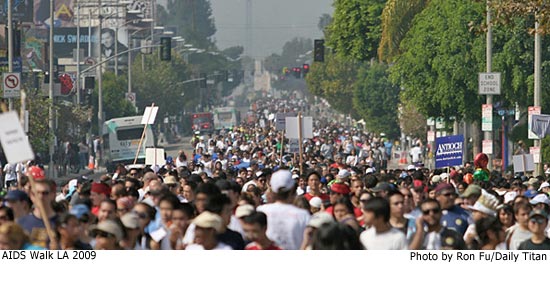
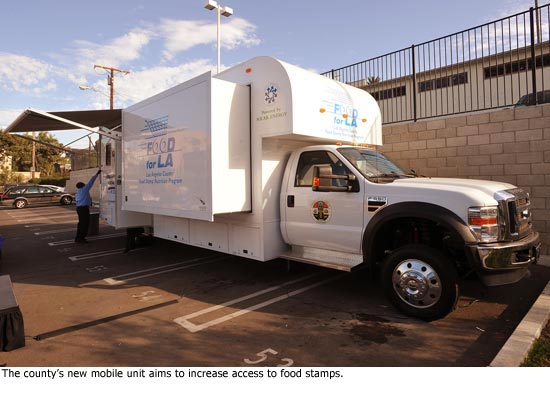
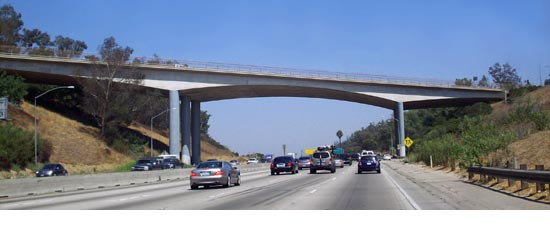
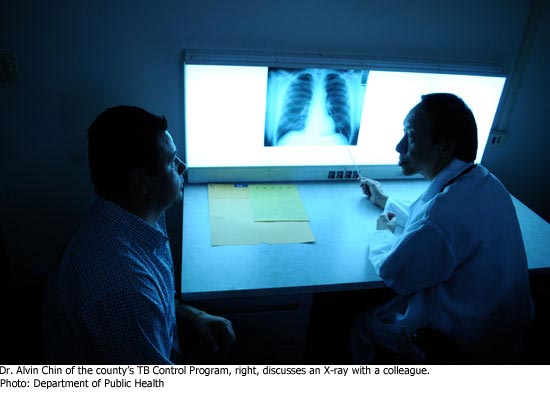
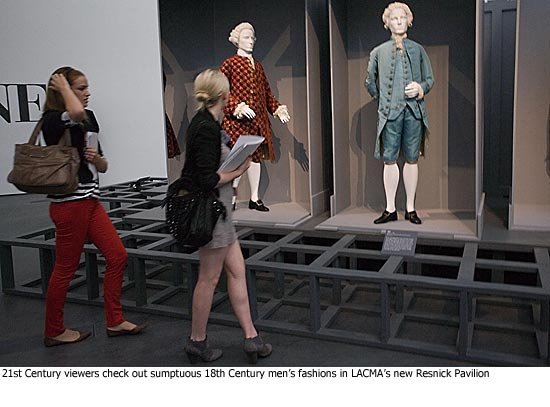










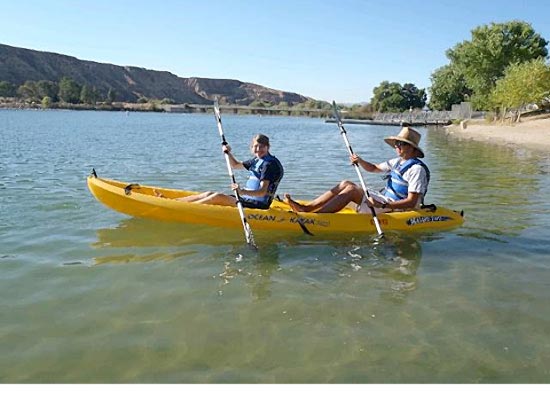






 Check for the latest closure information
Check for the latest closure information








